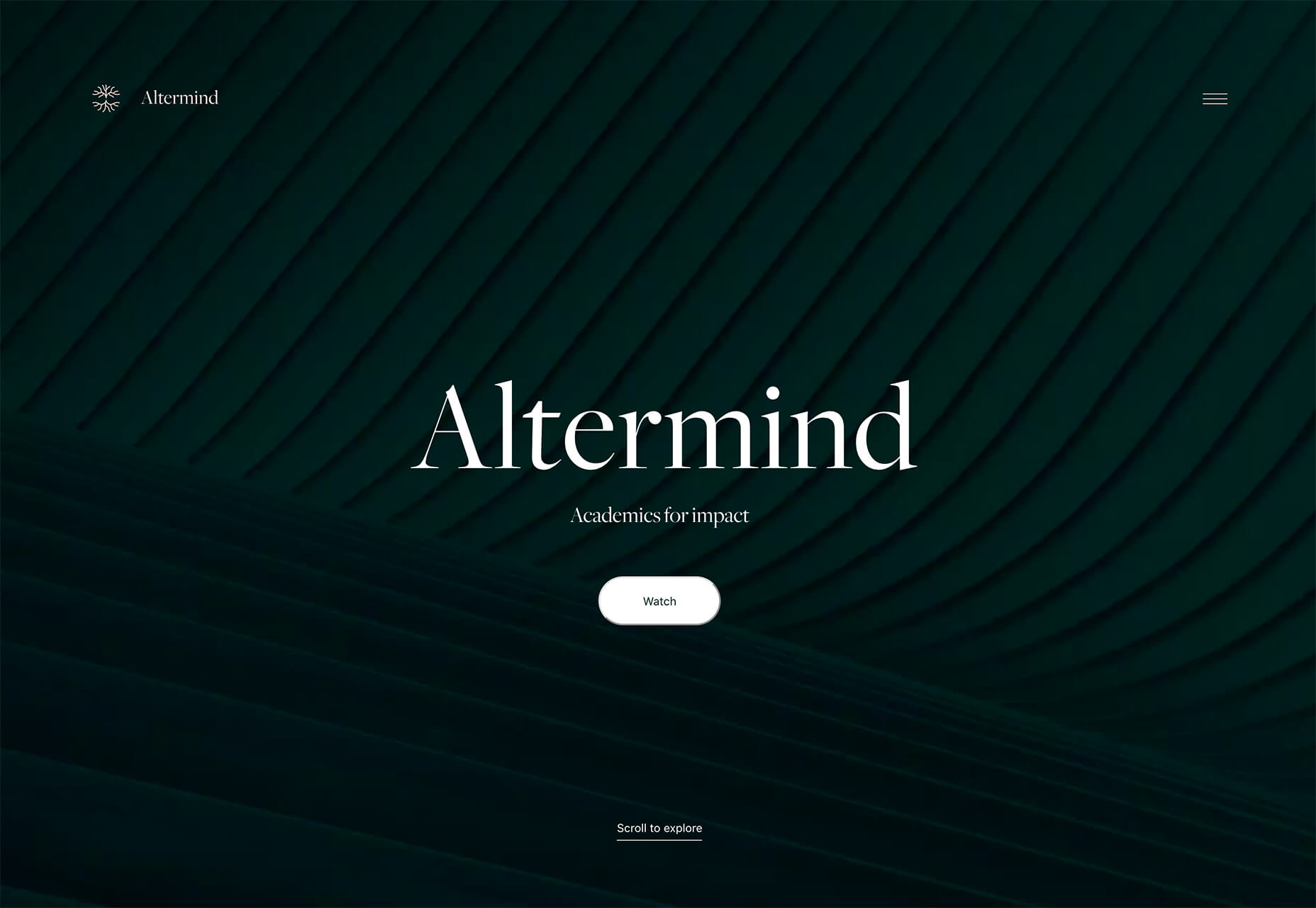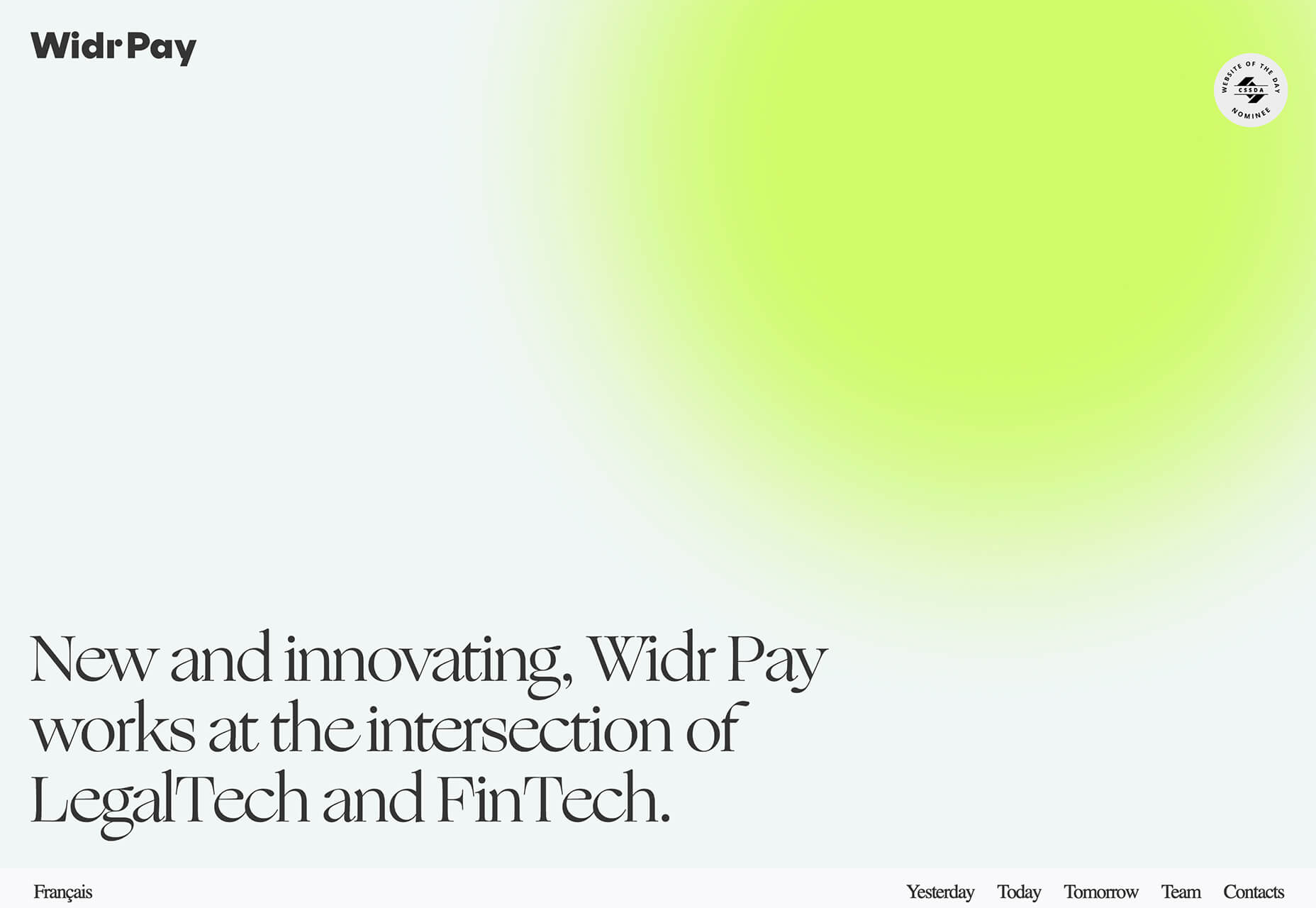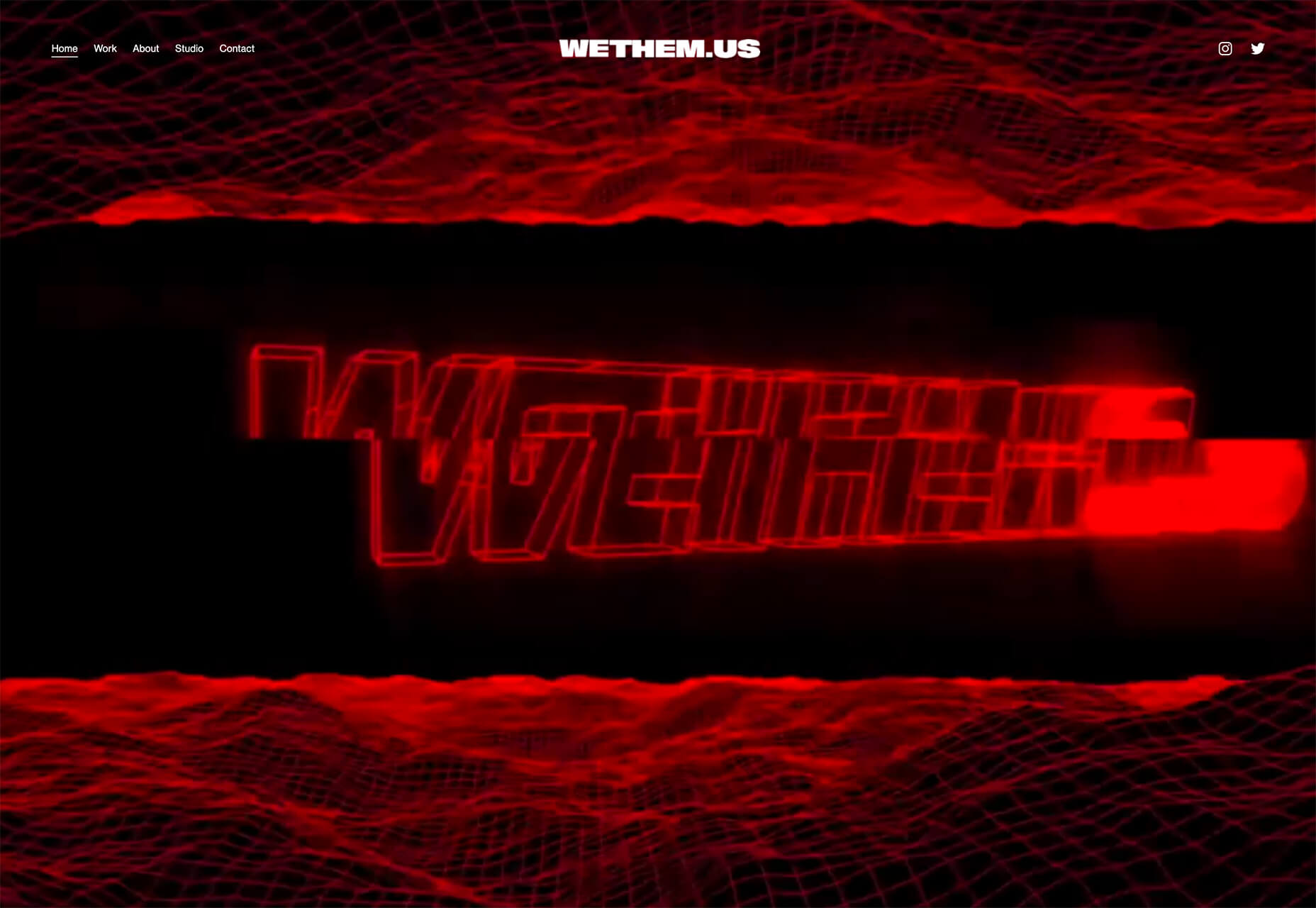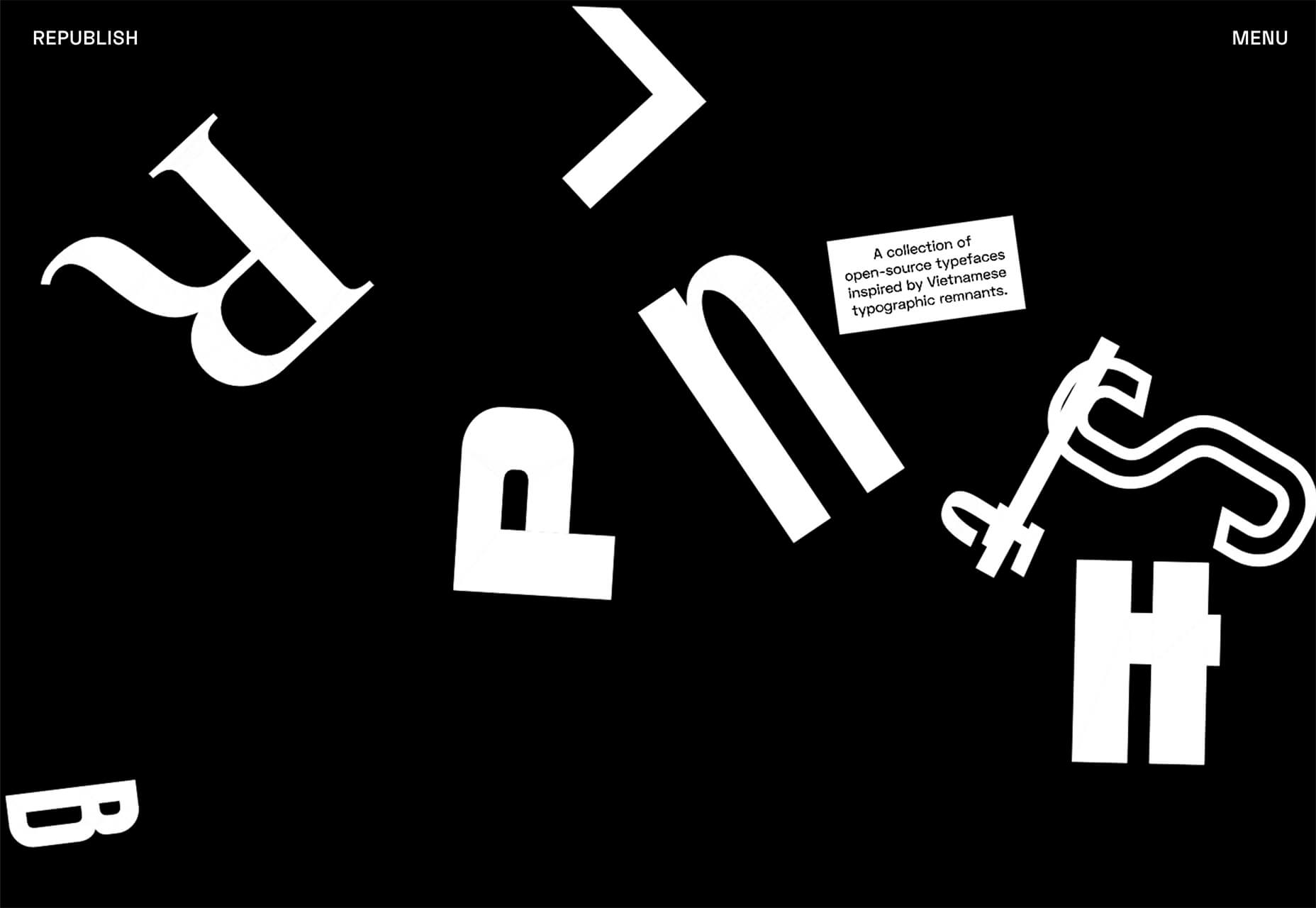
1. Strong Hero Images with Subtle Text
The contrast and yin and yang influence of strong and subtle elements in this trend results in a fantastic visual. These website designs which feature strong hero images (or video) with subtle typography draw the eye and create immediate intrigue. Strong imagery pulls you in and the key to text elements that work is placed in a location that moves the eye through the image around the screen. Each of these examples uses this trend in a different way, but each is engaging and makes you want to jump into the scene. Most of the “readable” information from the design comes from the image or visual presentation. The text serves as a secondary informational element. It’s quite a shift from many of the oversized typography and hero treatments that have dominated website design for the last few years. The simplicity is fabulous. Makena Golf Club uses a video reel of the location to make you want to go there. The text element in the bottom corner never changes, and sticks with you as you look at the images. TEDx TughlaqRd uses a striking black and white image to draw the eye with smaller text elements that explain what you are seeing. You might even go back to the image and recognize the iconic “x” after reading the words.
TEDx TughlaqRd uses a striking black and white image to draw the eye with smaller text elements that explain what you are seeing. You might even go back to the image and recognize the iconic “x” after reading the words.
 Under Lucky Stars might be the simplest example of the trend but it gives you everything you need. The slider shows a cityscape with and without light pollution. The small text element serves as an identifier.
Under Lucky Stars might be the simplest example of the trend but it gives you everything you need. The slider shows a cityscape with and without light pollution. The small text element serves as an identifier.

2. Modern Serifs
Modern serif typography can be identified by the use of alternative thick and thin strokes in each letterform. The typography style has been popular with printed works for decades, such as newspapers and books, but is emerging as a lovely website type option. Modern serif first emerged in the late 18th century and while many have extreme variances in thick and thin strokes, that is not always the case. When used for website projects, this contrast is often less pronounced. This typography trend is likely emerging now because screen resolutions are high-quality enough to support it. Pixilation, backlighting, and small sizes can make modern serifs somewhat challenging to read on screens. But more of these concerns have vanished. If you aren’t sure where to start with serif fonts, Typewolf has a nice collection of popular options and where to find them. The Top 10 trending list is updated regularly. Modern serifs can inject a lot of personality into a project and are almost an art element of their own. Notice how each of the examples below use typography as the dominant element on the screen. Altermind features a strong modern serif for center branding and identification with a subtle but interesting background. The white text on a dark backdrop is classic and encourages readability. Widr Pay mixes a modern serif with an uber-trendy bright background for a super modern (and maybe a little bit retro) style. The contrast brings attention to the stacked text element.
Widr Pay mixes a modern serif with an uber-trendy bright background for a super modern (and maybe a little bit retro) style. The contrast brings attention to the stacked text element.
 Thomas Bosc uses a text overlay on an image – admittedly somewhat challenging in terms of readability – to draw users into his portfolio. The animated hover trick is worth a click-through. (His face pulls to the front of the text.)
Thomas Bosc uses a text overlay on an image – admittedly somewhat challenging in terms of readability – to draw users into his portfolio. The animated hover trick is worth a click-through. (His face pulls to the front of the text.)

3. Brutalism Influences
Brutalism is one of those website design trends that seems to make an appearance then fade away again. These designs can be harsh and intimidating. You need just the right content to make it work. The examples below show that using brutalism influences can be a workable middle ground, or help create a less garish aesthetic that is a little more user-friendly. The influences here include boxy, sharp typography styles as well as monospaced fonts; visible pixels and sharp edges; dark color schemes; and almost glitchy animation. Whether you are a fan of brutalism or not, you can appreciate the elements in these projects. WeThem.Us uses a video real that has an 80s gamification and movie theme. Everything is sharp and low-res, with no real type elements other than the main navigation until the end credit screen. What this example shows is the emotional/generational connection that this style can convey. Republish is interesting because the typefaces on the screen aren’t really brutalist, but the display and organization of information is. This is a neat way to use concepts of brutalism without overwhelming users with this design theme.
Republish is interesting because the typefaces on the screen aren’t really brutalist, but the display and organization of information is. This is a neat way to use concepts of brutalism without overwhelming users with this design theme.
 Uroboros Design-Art Festival is the most brutal of the examples, but there are hints of modernism in the crisp, round center animation. It’s not fully brutalist, but close. The information below the scroll carries the monospaced font, but a mostly black and white aesthetic is clean and sharp, much less jarring than the hero area on the home page.
Uroboros Design-Art Festival is the most brutal of the examples, but there are hints of modernism in the crisp, round center animation. It’s not fully brutalist, but close. The information below the scroll carries the monospaced font, but a mostly black and white aesthetic is clean and sharp, much less jarring than the hero area on the home page.

Conclusion
One of the most fun things to look at when studying website design trends is how many elements overlap. Note the modern serif used with the strong hero/subtle text trend. Note how some of the text elements in the modern serif trend aren’t as oversized and bold as we have seen most recently. Design trends such as these are nice because they are versatile and usable. While we aren’t seeing a lot of sweeping change right now, these tweaks are inspiring and interesting.Carrie Cousins
Carrie Cousins is a freelance writer with more than 10 years of experience in the communications industry, including writing for print and online publications, and design and editing. You can connect with Carrie on Twitter @carriecousins.
Read Next
20 Best New Websites, April 2024
Welcome to our sites of the month for April. With some websites, the details make all the difference, while in others,…
Exciting New Tools for Designers, April 2024
Welcome to our April tools collection. There are no practical jokes here, just practical gadgets, services, and apps to…
14 Top UX Tools for Designers in 2024
User Experience (UX) is one of the most important fields of design, so it should come as no surprise that there are a…
By Simon Sterne
What Negative Effects Does a Bad Website Design Have On My Business?
Consumer expectations for a responsive, immersive, and visually appealing website experience have never been higher. In…
10+ Best Resources & Tools for Web Designers (2024 update)
Is searching for the best web design tools to suit your needs akin to having a recurring bad dream? Does each…
By WDD Staff
3 Essential Design Trends, April 2024
Ready to jump into some amazing new design ideas for Spring? Our roundup has everything from UX to color trends…
How to Plan Your First Successful Website
Planning a new website can be exciting and — if you’re anything like me — a little daunting. Whether you’re an…
By Simon Sterne
15 Best New Fonts, March 2024
Welcome to March’s edition of our roundup of the best new fonts for designers. This month’s compilation includes…
By Ben Moss
LimeWire Developer APIs Herald a New Era of AI Integration
Generative AI is a fascinating technology. Far from the design killer some people feared, it is an empowering and…
By WDD Staff
20 Best New Websites, March 2024
Welcome to our pick of sites for March. This month’s collection tends towards the simple and clean, which goes to show…
Exciting New Tools for Designers, March 2024
The fast-paced world of design never stops turning, and staying ahead of the curve is essential for creatives. As…
Web Tech Trends to Watch in 2024 and Beyond
It hardly seems possible given the radical transformations we’ve seen over the last few decades, but the web design…
By Louise North
















